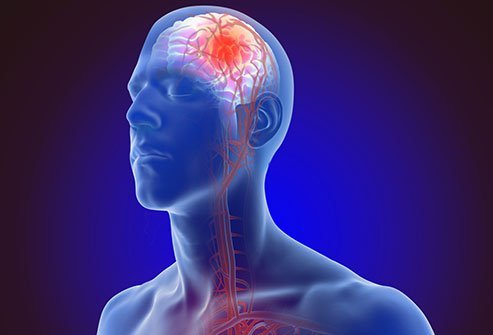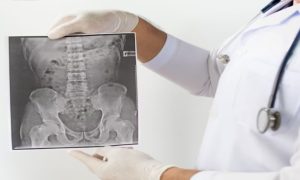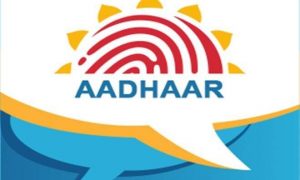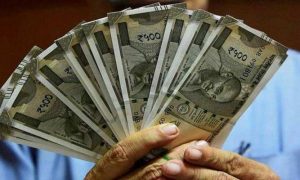Cases of stroke are increasing worldwide due to lifestyle or genetic changes. Experts on warning signs, risk factors and treatment for stroke.
A stroke occurs when the blood flow to the brain is disrupted and the lack of oxygen starts to damage the brain cells and tissues. If not addressed on time, stroke can lead to brain damage or even death. Cases of stroke are increasing worldwide due to lifestyle or genetic changes. While people above 55 years were more susceptible to it earlier, it is increasingly becoming common in young. Sedentary lifestyle, unhealthy food, certain medications could also raise risk of stroke.
A stroke is a medical emergency that can potentially result in paralysis or numbness in the face, arm, or leg. Around the world, someone suffers a stroke every 3 seconds, amounting to 12.2 million new strokes annually. Globally, one out of four people above 25 is likely to have a stroke. World Stroke Day is celebrated on October 29 every year to generate public awareness and educate about the risk factors and signs of stroke.
“Responding to a stroke quickly is critical as more brain tissue is irreversibly damaged if emergency treatment is not done. A goal of 60 minutes or less from door-to-treatment is ideal. A duration of 4.5 hours is often referred to as the “golden hour” for stroke. During this golden hour, a focused diagnostic workup has to be completed to rule out other conditions that may mimic a stroke. Medical professionals termed the golden hour as such since it can make a huge difference. Patients who receive the clot-busting drug tPA within the golden hour are more likely to avoid long-term brain damage and have increased chances of survival. Every minute a stroke is untreated; an average patient loses 1.9 million neurons, 13.8 billion synapses, and seven million axonal fibres,” says Dr Krishnan P R, Consultant Neurology, Fortis Hospital, Bannerghatta Road, Bangalore.
“A stroke is a form of brain attack that occurs when a blood vessel in the brain disrupts and bleeds or there is an interruption in the blood supply to the brain that prevents blood and oxygen from reaching the brain’s tissues. Due to this reason, there is a lack of oxygen in the brain that damages the brain cells and tissue. The condition can lead to the permanent brain damage or death of a patient, if not diagnosed early,” says Dr P.N. Renjen, Senior Consultant, Neurology, Indraprastha Apollo Hospitals.
Symptoms of stroke
So how do you know if someone is having a stroke? Dr P.N. Renjen also shares common signs and symptoms.
• Severe headaches
• Numbness in the body especially on face, leg and one side of body.
Paralysis
• Trouble speaking or understanding speech
• Loss of vision; sometimes the vision is black and blur
• Nausea and vomiting
• Unstable walking; difficulty in maintaining body balance
• Dizziness
What to do when someone suffers from stroke
Dr. Vikas Gupta Director, Neurosurgery Department, Kailash Deepak Hospital Delhi says when a stroke occurs, the patient should be immediately rushed to a nearby hospital which is equipped to handle such patients in other words a ‘stroke’ ready hospital.
“Upon reaching the emergency, a CT Scan of the head of the patient should be done immediately at the hospital. Proper diagnosis within the first few hours after the onset of the stroke symptoms should be done. The most definite treatment is endovascular thrombectomy. In simple language it means removing the blood clot under the guidance of the image which will enable proper flow of the blood to the brain. Since 2015, a new treatment has come which is called mechanical thrombectomy. We take the patient directly to the cath lab and open up the artery which is blocked,” says Dr Gupta.
Importance of golden hour during stroke
“Responding to a stroke quickly is critical as more brain tissue is irreversibly damaged if emergency treatment is not done. A goal of 60 minutes or less from door-to-treatment is ideal. A duration of 4.5 hours is often referred to as the “golden hour” for stroke. During this golden hour, a focused diagnostic workup has to be completed to rule out other conditions that may mimic a stroke. Medical professionals termed the golden hour as such since it can make a huge difference. Patients who receive the clot-busting drug tPA within the golden hour are more likely to avoid long-term brain damage and have increased chances of survival. Every minute a stroke is untreated; an average patient loses 1.9 million neurons, 13.8 billion synapses, and seven million axonal fibres,” says Dr Krishnan P R.
What increases your risk of stroke
“Generally the chances of stroke are higher for people above the age of 55 but now-a-days cases of stroke are rising in adult too. This can be due to the lifestyle or genetic changes. Also, some medicines can raise your chances of stroke such as blood-thinning drugs that doctors prescribe to prevent blood clots, can sometimes make a stroke more likely through bleeding. According to many studies hormone therapy, used for menopause symptoms like hot flashes is linked with a higher risk of strokes. And low-dose estrogen in birth control pills may also makes a person odds go up. Stress apart from other diseases can increase your odds of stroke. Chronic diseases like hypertension, diabetes, heart diseases can not only increase stroke chances but also cause severe damage to brain in case of a stroke,” says Dr P.N. Renjen.
Types of strokes
“There are two major strokes. First, there is a sudden clot developed either from heart or somewhere else and went into the brain and then that clot blocked one artery leading to less blood supply in that area. This is known as Ischaemic stroke. Ischemia means less supply of blood. Another stroke is haemorrhagic stroke. When there is lot of blood in the brain, it can lead to lead to bursting of blood vessel leading to accumulation of blood. It is difficult to distinguish between the two because both have mostly same symptoms like tingling in hands or legs, disbalance of the body, drooling of the face,” says Dr Renjen.
Treatment for strokes
Dr Krishnan P R says a combination of medicines is used to treat and prevent the recurrence of an ischemic stroke.
– Thrombolysis involves using clot-buster medicine called alteplase or tenecteplase, injected to dissolve blood clots and restore blood flow to the brain.
– An emergency procedure called thrombectomy removes a blood clot from a vein or artery.
– Aspirin and other antiplatelets, anticoagulants, statins and blood pressure medicines are used to reduce the risk of clots and prevent stroke due to high blood pressure or cholesterol.
– If the build-up of fatty plaque is excessive, carotid endarterectomy is performed to remove the fatty deposits.
– Medicines are used in haemorrhagic strokes to lower blood pressure.
– A craniotomy is a surgical procedure used to remove blood in the brain if any blood vessel bursts.
– As per statistics, 10% of stroke patients recover fully, 25% recover with minor impairments, and 40% recover with moderate-to-severe impairments. 10% of patients need long-term care, and 15% of strokes result in death.
Lifestyle changes for reducing risk of stroke
“Minimizing alcohol consumption, watching your weight, managing stress, and giving importance to mental health are some lifestyle changes critical to avoid a stroke and preventing another stroke. As per a study, about 25% of stroke survivors experience another stroke,” says Dr Krishnan P R.





































